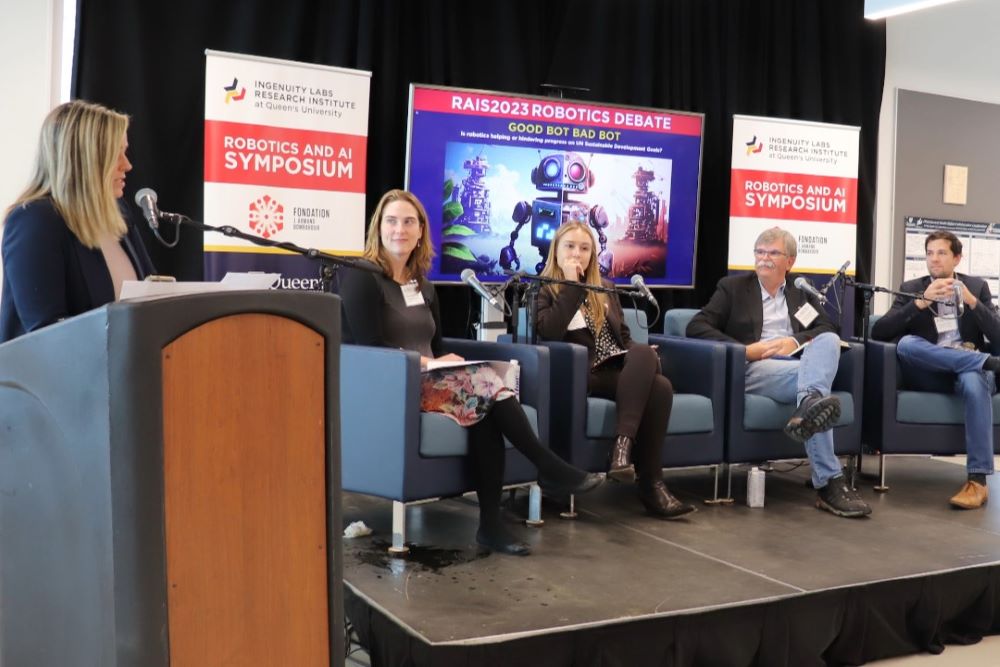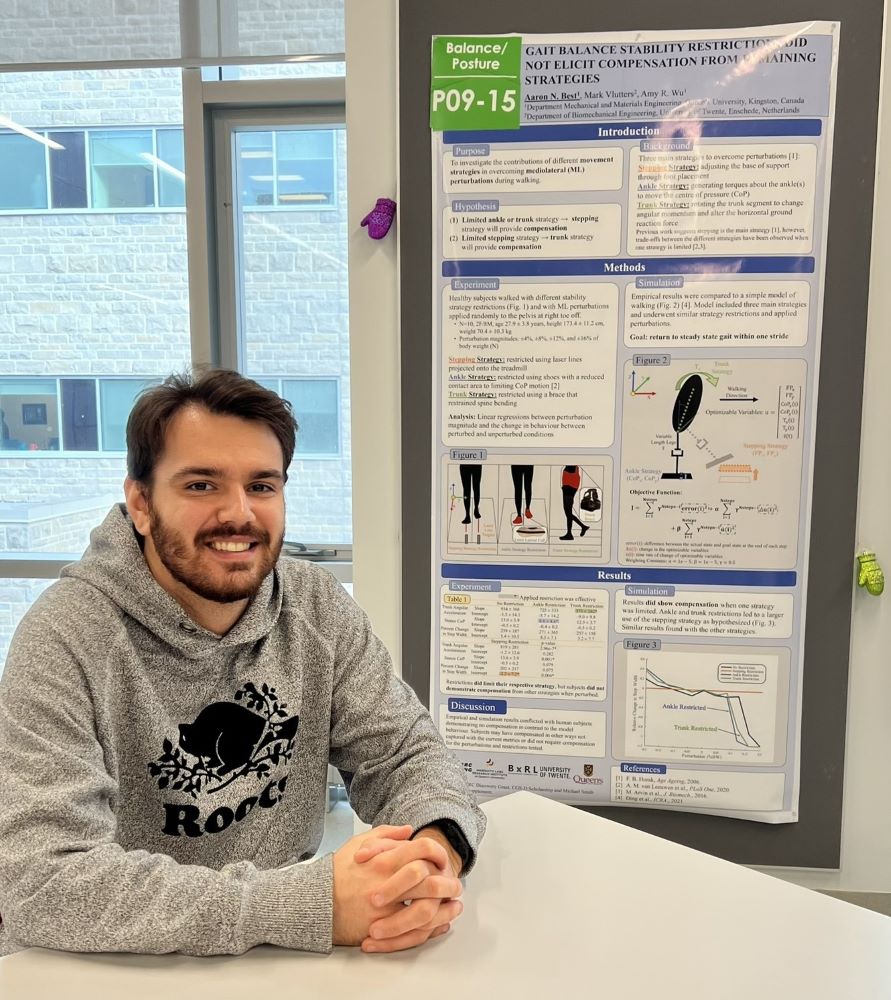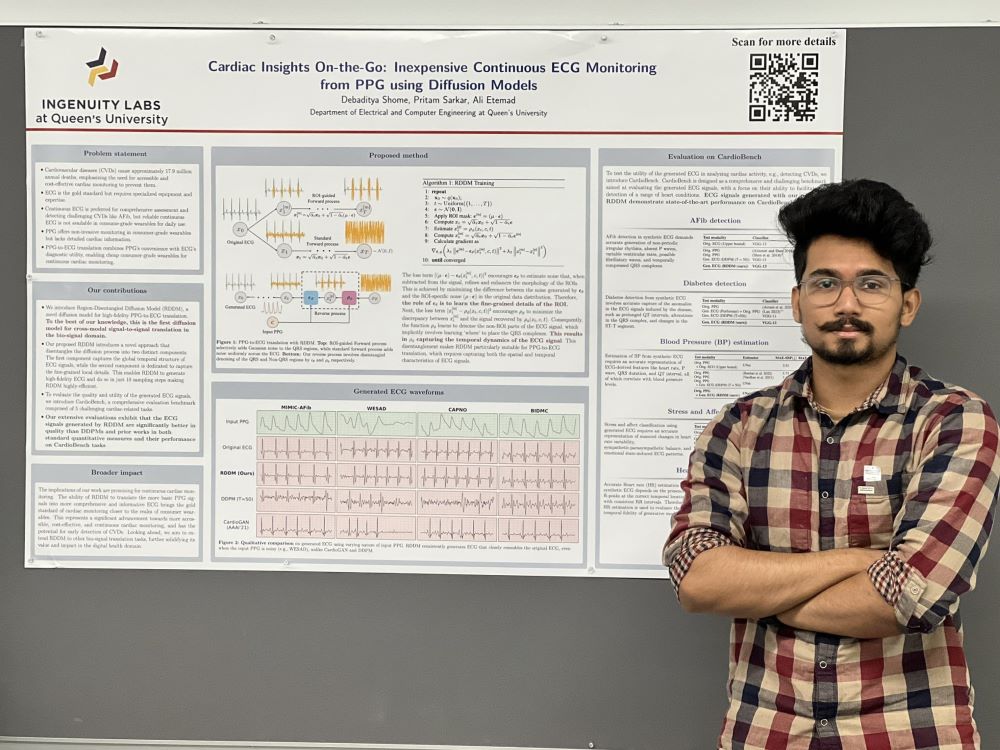
In the animated movie Wall-E by Disney and Pixar, a solitary robot tries to clean up garbage on an uninhabited, devastated Earth, trashed by centuries of human exploitation. The dystopian plot takes a turn toward the end of the film, when (spoiler alert) Wall-E and a fellow robot, with the support of a few humans that returned to Earth, work to restore the planet, seed by seed.
If in fiction robots can save humanity from itself and lead Earth towards environmental sustainability, what could happen in real life? That was one of the questions posed at this year’s Robotics & AI Symposium (RAIS2023), presented by Queen's Ingenuity Labs Research Institute this past fall.
“Multidisciplinary researchers at Ingenuity Labs are focused on creating future intelligent systems and robotic machines that do good things for people and the planet that we inhabit together,” says Ingenuity Labs Director, Joshua Marshall. “The selection of this year’s debate question was deliberate, aimed at pushing both ourselves and our research partners to scrutinize the benefits and consequences of their efforts through the lens of the UN SDGs.”
The debate was moderated by technology journalist and author Amber Mac and led by Queen’s researchers Heather Aldersey (School of Rehabilitation Therapy), Jackson Crane (Mechanical and Materials Engineering) and Melissa Greeff (Electrical and Computer Engineering), as well as invited speaker Michael Jenkin, from York University. Half the panel was asked to discuss how robots can help us move towards the United Nations’ Sustainable Development Goals (UN SDGs), while the other team had to highlight the ways in which robots can hinder sustainability.
“We need innovation, including robotics, more than ever,” started Aldersey, who is also the Canada Research Chair in Disability Inclusive Development and Special Advisor to the Principal on UN SDGs. She mentioned numerous situations where robots were used to support a variety of SDGs, including
Greeff added that the nuclear accident in Fukushima, Japan in 2011 triggered important research in the field of robotics, developing knowledge that was later applied to post-disaster response and recovery. She also commented that, throughout history, improving productivity was a key factor in improving human life quality, and robotics and AI are some of the tools we can use to improve productivity.
While recognizing that increased productivity has played a significant role in reducing poverty, Crane counterargued that maybe we are now at a point where we need to work on equality of access and opportunities, rather than solely focusing on increasing productivity. Jenkin discussed how robots, while helpful in developed countries, are still mostly unavailable in poorer regions of the world, worsening inequalities. The panelists also raised concerns about electronic waste, energy management, and carbon emissions.
After the debate, attendees were invited to vote on whether robotics help or hinder progress on the SDGs. The room was filled with some cautious optimism: while the International Federation of Robotics has stated that 13 out of 17 SDGs can be supported by robotics, the research community knows that developing new technologies is just a starting point. “Robotics can be one piece of the sustainability puzzle, but it is definitely not the only one,” concluded Aldersey.
“Research centres and institutes like Ingenuity Labs are often catalysts for pushing the boundaries of knowledge and bringing together diverse perspectives for more impactful research,” says Marshall. “Events like this remind us that our research and scholarly activities must not take place in isolation, without consideration for broader contexts and purposes.”
Students of robotics and AI research win poster contest
This was the third edition of the annual symposium. The event, which gathered more than 120 researchers and students from Queen’s and beyond, also included a student poster competition.

Aaron Best (Sc’19, Mechanical) is studying biomechanics under the supervision of Amy Wu. “At the biomechanics and robotics lab, we’re a hybrid between studying basic biomechanics and applying it to robotics,” he says. “My research specifically is looking at walking and how humans are able to maintain stability during walking and then applying that to robotics.”
Originally designed for presentation at the 2023 Congress gathering of the International Society for Biomechanics, Best’s poster—a winner in the robotics category at RAIS2023—detailed his research. See Aaron Best's poster here.
“The study that I was working on looked at how humans responded to perturbations,” he said, unanticipated deviations of one’s stride. “Humans are very good at reacting to perturbations and avoiding falls, when we're healthy. The goal is to see if we could have our robots do that at a similar aptitude.”

Debaditya Shome moved from India to begin his graduate-level study at Queen’s “solely because of the research lab” in Fall 2022. His search for graduate programs led him to Ingenuity Labs and his now-supervisor Ali Etemad. A winner of the RAIS2023 poster competition in the AI category and accepted in the main conference at AAAI 2024, Shome’s work relies on applying deep learning to solve human-centric problems.
“PPGs are available in many devices but they are very cheap and they don't have enough information for a cardiologist to detect certain heart diseases,” he says. “ECG is the gold standard, which is used by cardiologists to detect cardiovascular diseases, for example. heart attacks”
“But ECG is a single point device which only you can access at a hospital, for example. If you want continuous monitoring, 24-hour monitoring, we are enabling using our neural network which can translate between PPGs to ECGs and we show that our generated ECGs lead to significant improvements in detecting several cardiovascular conditions like Atrial Fibrillation, Diabetes, Blood Pressure, etc.” See Debaditya Shome's poster here.
Ingenuity Labs Research Institute is a collaborative research initiative that connects 39 faculty members and more than 100 graduate students at Queen’s dedicated to three main research topics: smart environments and infrastructures; human sensing and assistive devices; and intelligent mobile systems. The annual symposium aims to stimulate debate and reflection about the social impact of this area of research.
The article, written by Research Outreach and Events Specialist Catarina Chagas, appeared in its original form in the Queen’s Gazette.